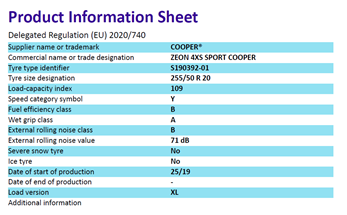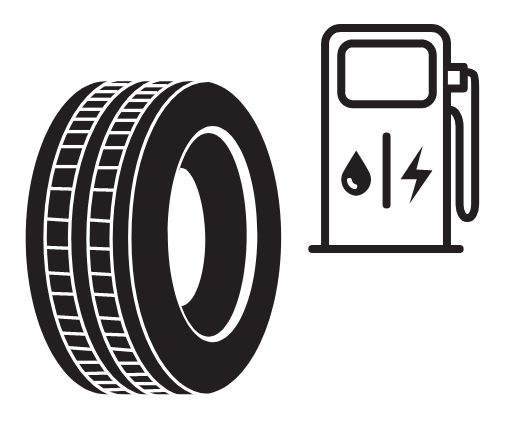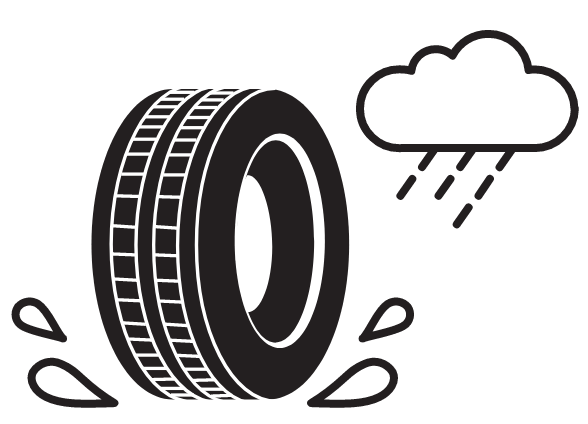NEW EU TIRE LABEL INFORMATION
1st May 2021
The European Union has expressed its commitment to building an Energy Union with a forward‐looking climate policy. Fuel efficiency is a crucial element of that and the associated energy policy framework.
The transport sector reportedly accounts for a third of the Union’s energy consumption, with road transport being responsible for about 22 % of the Union’s total greenhouse gas emissions in 2015.
Tires, mainly because of their rolling resistance, account for 20 to 30 % of the fuel consumption of vehicles. A reduction in the rolling resistance of tires would therefore contribute significantly to the fuel efficiency of road transport and thus to the reduction of greenhouse gas emissions.
In order to meet the challenge of reducing the CO2 emissions of road transport, Member States, in cooperation with the Commission, are working to create frameworks that encourage innovation with regard to fuel‐efficient and safe tires.
Improving the labelling of tires will enable consumers to obtain more relevant and more comparable information on fuel efficiency, safety and noise and to take cost‐effective and environmentally friendly decisions when purchasing tires.
From Saturday 1st May 2021, a new label will be applied to all new tires to be made available in the European Union from that date onwards. The label has updated grading for Fuel Efficiency, Wet Grip (stopping distance on a wet surface) and tire rolling sound emission.
Below is an example of how the new EU label will look for our Cooper brand:

What does the label mean?
| FUEL EFFICIENCY (Rolling Resistance) 5 classes from E (least efficient) to A (most efficient) Effect may vary among vehicles and driving conditions, but the difference between a E and an A class for a complete set of tires could reduce fuel consumption by up to 7.5 %* and even more in case of trucks. Note: fuel savings and road safety depend heavily on the behavior of drivers and eco‐driving can significantly reduce fuel consumption. |
| WET GRIP (Braking Performance) 5 classes from E (longest braking distances) to A (shortest braking distances) Effect may vary among vehicles and driving conditions, but in the case of full braking, the difference between a E and an A class for a set of four identical tires could be up to 30% shorter braking distance (e.g. for a typical passenger car driving at 80 km/h speed this could be up to 18m shorter braking distance)*. Note: stopping distances must always be respected. |
| NOISE (Exterior Rolling Noise) In addition to the noise value in Decibel dB(A) a letter (from A to C) displays whether the tire external rolling noise performance is above the United Nation Reg 117 mandatory limit value |
In addition to the Fuel Efficiency (Rolling Resistance), Wet Grip and tyre rolling sound emission, the label will also display if the tyre is suitable for Snow and Ice use via the following graphics:


SNOW ICE
The new Label will also feature a QR Code that can take users to the EPREL Database (European Product Database for Energy Labelling). Scanning the QR code will allow consumers to access the information of each specific tyre. As well as accessing the label, it will also be possible to see a Product Information Sheet which gives details of the tyre’s Range/Size/Load and Speed, along with its label grades. An example of this Product Information Sheet is set out below:













